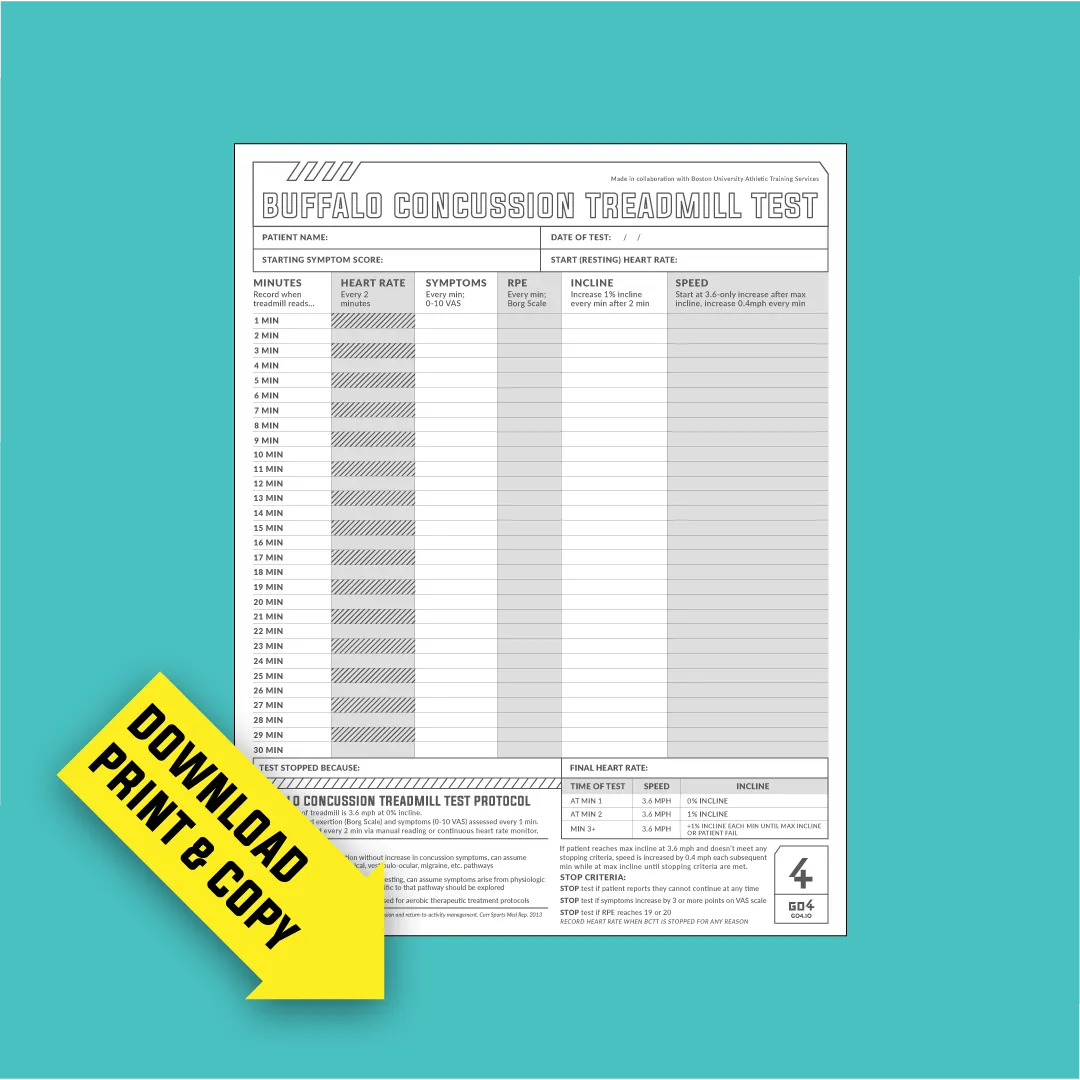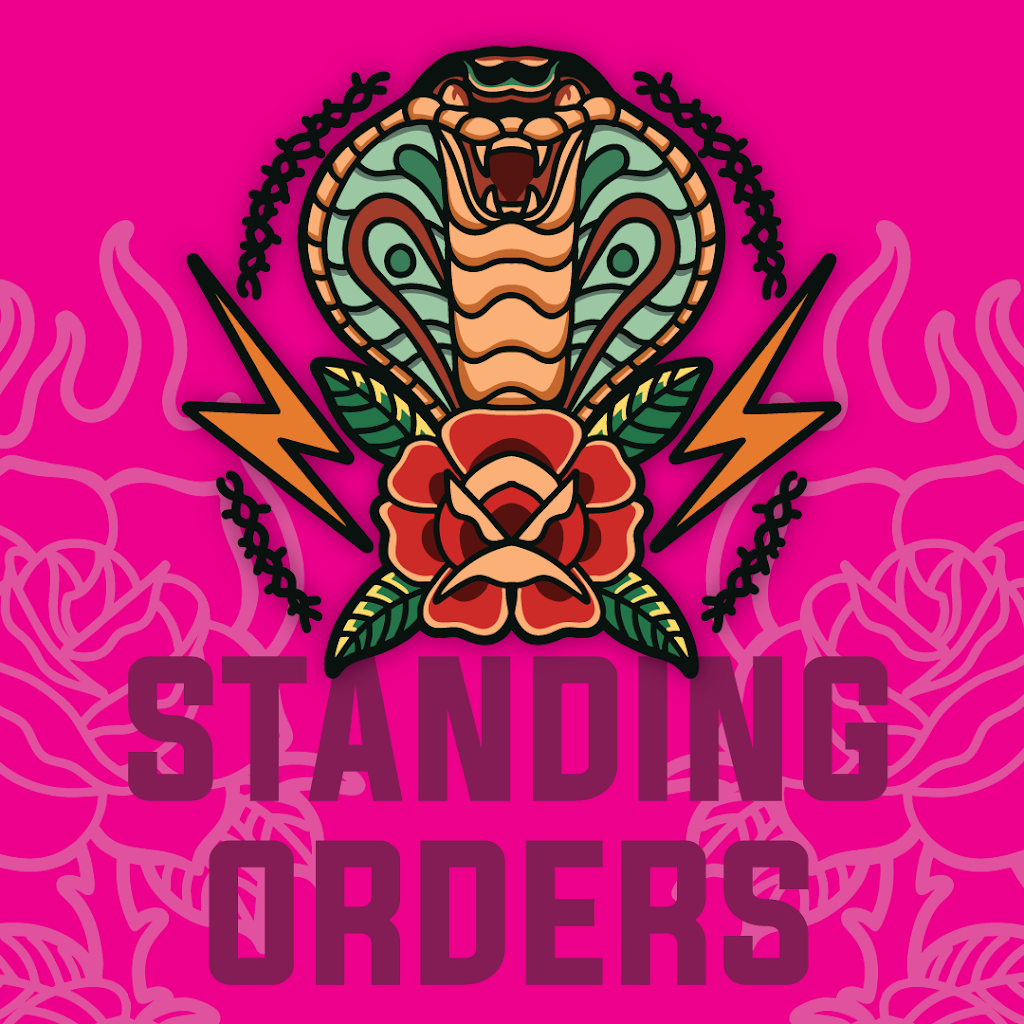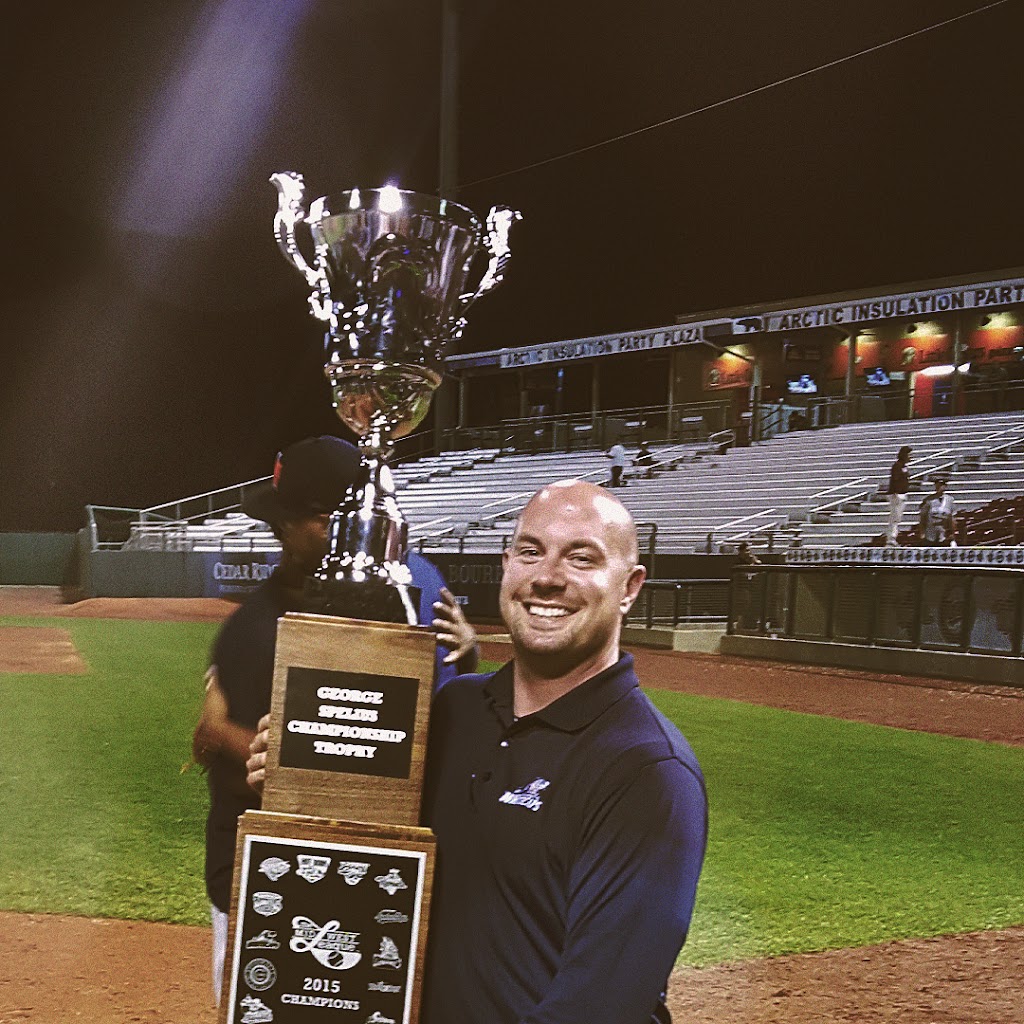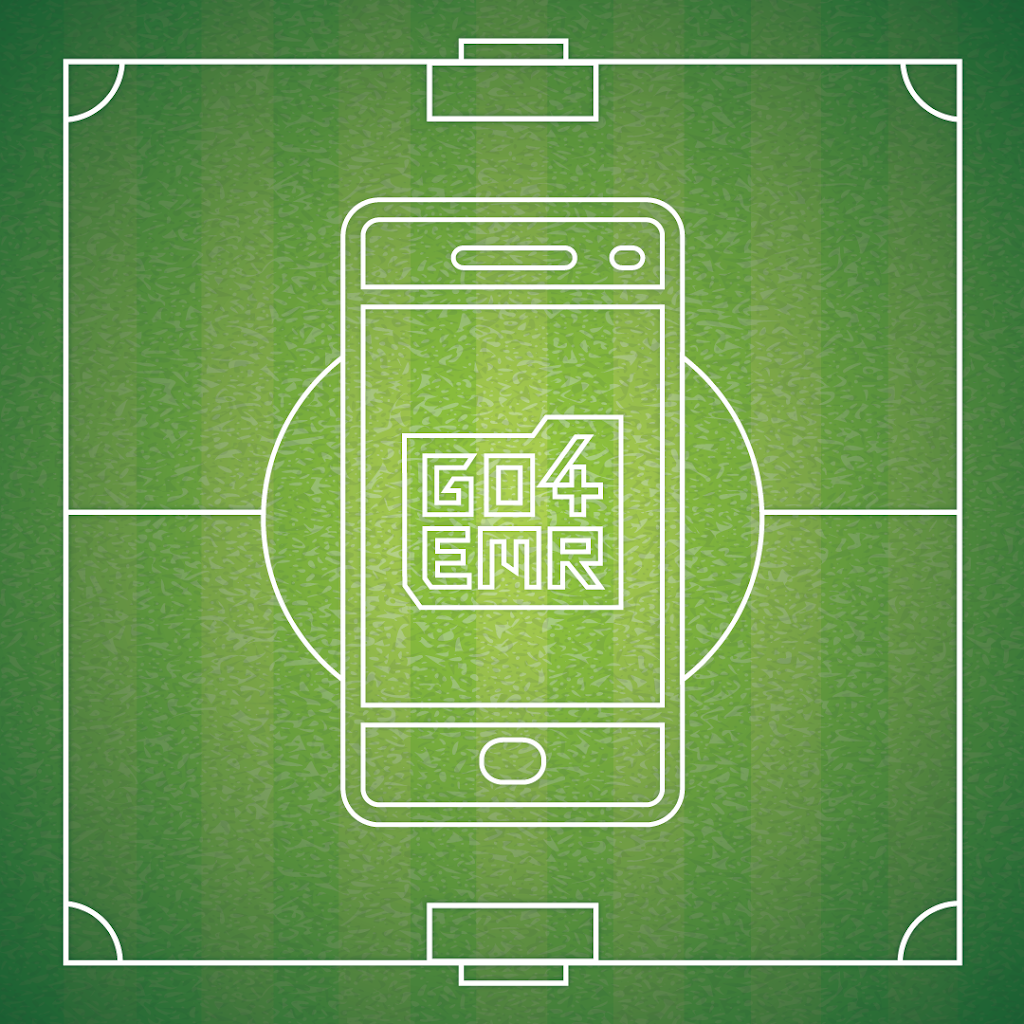Buffalo Concussion Treadmill Test: Concussion Series with Nick Pfeifer, EdM, ATC

Including Buffalo Concussion Treadmill Test Log and Protocol
Go4 is spending the month of September focused on concussions. From symptoms sheets for coaches/players to VOMS and BCTT logs for your athletic training room, we’ve got you covered, so that you’ve your athletes covered.
To get all of the concussion resources, click here!
Not up to speed on the BCTT? Read the article below for background and procedures on the Buffalo Concussion Treadmill Test written by Nick Pfeifer, EdM, ATC. Pfeifer’s area of clinical interest and specialty is in neurotrauma and spine pathologies with a particular focus on concussions and concussion rehabilitation at Boston University.
By: Nick Pfeifer, EdM, ATC
Concussions are complex. Researchers have been studying them for years to better understand all of the minute physiological happenings that occur downstream from that initial concussive event. It is an injury to the brain after all and that bundle of cells is pretty important. Through all of this research we have been able to learn a lot about what we can do to help these patients with concussions.
It was always baffling to me that the best we could come up with for patients with a concussion was to sit in a dark room and wait. Just wait until they got better. I know everyone reading this has heard that saying before. How did we accept that for so long? ATs thrive on building active and engaging rehab programs for our patients to help them recover faster than they thought possible. Concussions are no different. We know that stroke patients thrive in an active rehab program after their trauma, why should concussions be so different?
There has been great research completed to articulate what exactly is happening inside of the body following a concussive event. To put it simply, there is chaos. The beautiful homeostatic balance our body works so hard to keep in check gets turned upside down. Sodium and Potassium are flowing in and out of the cell at unsustainable rates. Cerebral blood circulation slows down. This throws off the body’s ability to produce ATP-based energy. This makes it hard for our body to do things that require more energy, which is almost everything.
If this process doesn’t right itself it can lead to continued dysfunction, but if we are able to rehabilitate that process we can make change for the better. We can help it regulate itself. Think about the principles we ATs use across the board in rehab – progressively expose the body to appropriate stress to allow it the chance to adapt and overcome said stress. By using the Buffalo Concussion Treadmill Test (BCTT), we can do just that for this physiologic type of concussion.
A physiologic concussion needs a physiologic solution. The BCTT is adapted from stroke rehab principles–slowly increasing the demand for energy production, consumption and cerebral circulation in a highly controlled environment. If this results in symptom provocation, then we know we have uncovered the root of the dysfunction. We can use this threshold as a new ceiling to actively rehabilitate at a lesser intensity. This way we know it is safe for the patient and set up to action an impairment directly.
If you don’t have a treadmill, that is okay! Think about our goals of this assessment – gradually increase the activity intensity to increase the demands in a controlled manner. A treadmill makes this easy because you have so much control on the parameters right at your fingertips. ATs are resourceful, it’s one of our defining characteristics. If you don’t have a treadmill, use a bike. If you don’t have a bike, just walk. But remember, be scientific. Track that heart rate, track that symptom provocation, track that perceived exertion. This way when the assessment is complete, you have information that is actionable.
These active rehab programs get patients better faster. They keep them involved and in control of their path forward. If we look at concussions scientifically we can find our rehab plans in our assessments. We just need to know where to look.
Are you an Athletic Trainer?
Join us!
From per diem shifts to full-time opportunities, AT resources, PLI, a free EMR and more, Go4 is the essential AT app. Sign up now!
"*" indicates required fields
Other articles you might like

What’s the deal with Standing Orders?
How do I get standing orders as an athletic trainer? Q: What are standing orders? A: Standing orders, aka medical protocols, establish the scope of practice for an athletic trainer. Under the direction of a physician, they are an overview of the specific skills that the AT is legally able…

AT Spotlight: Thomas Obergefell, Athletic Training from the Dugout
Name: Thomas Obergefell, MS, ATC, LAT Nickname: T.J. Alma…

Middle School / High School / College / Any School EMR – The Importance of Documentation
Go4’s in-app Electronic Medical Record We all know the reasons why it’s important to thoroughly document, but incase you forgot, here they are:…